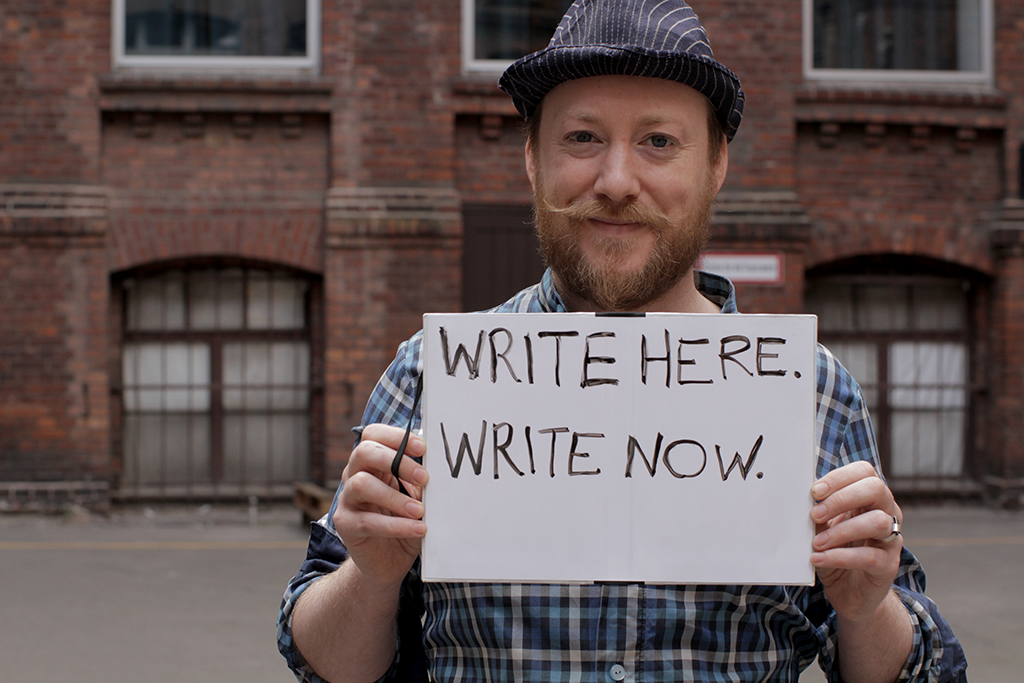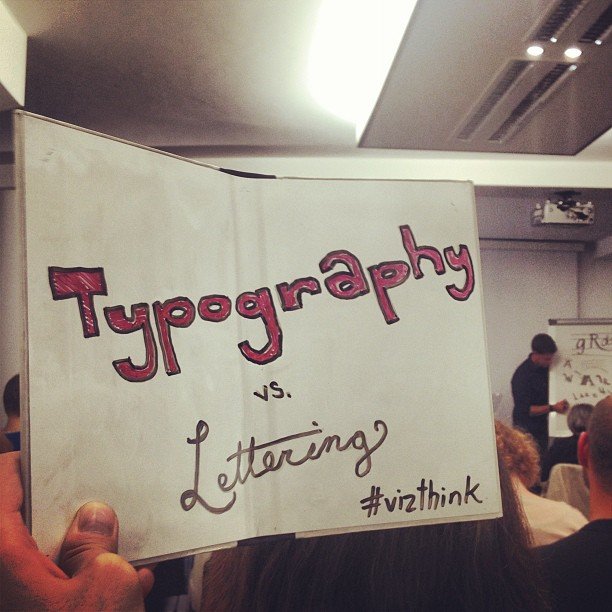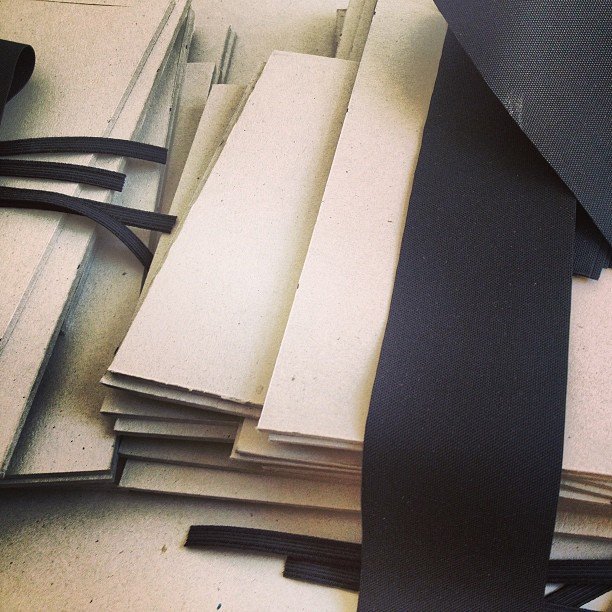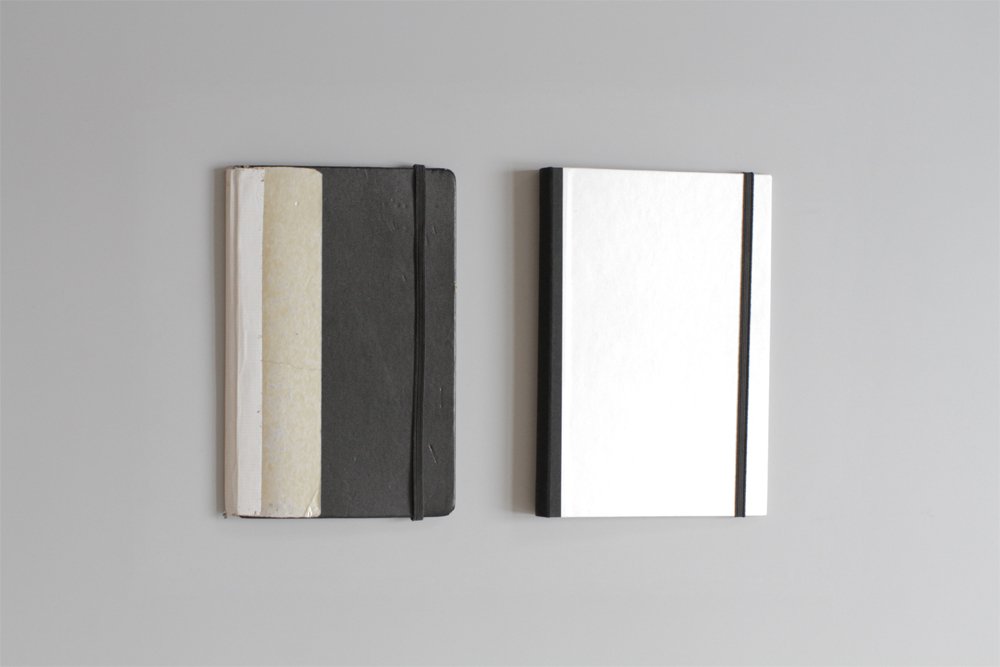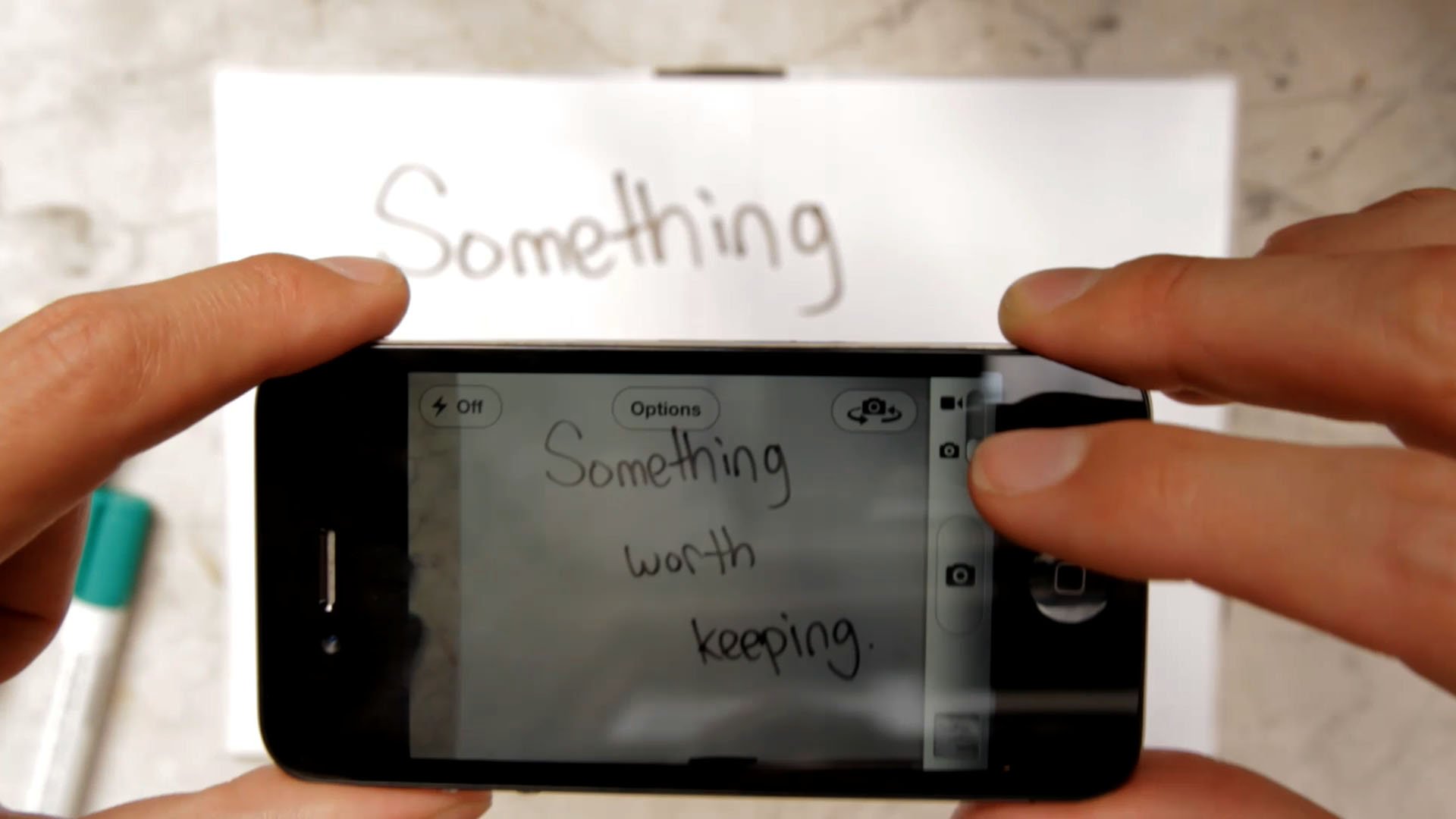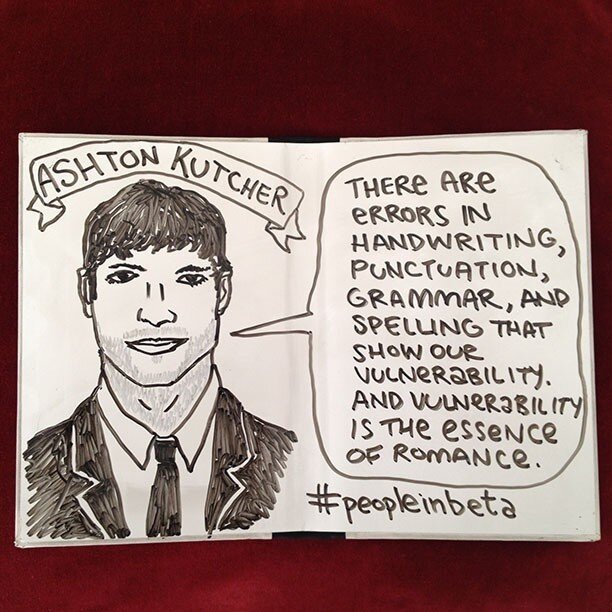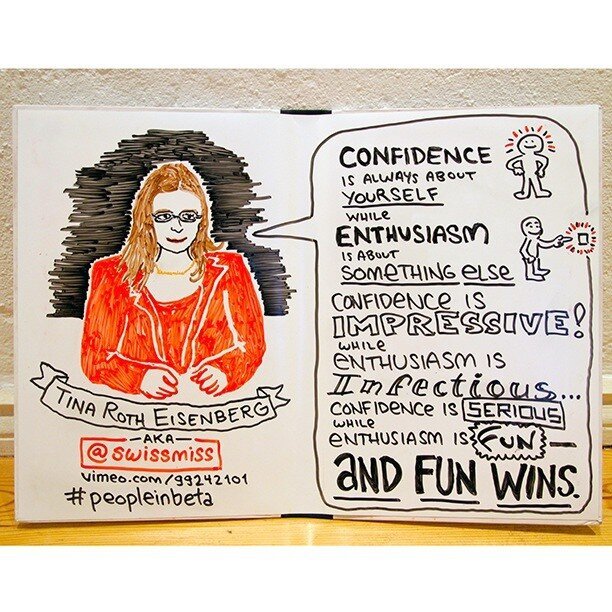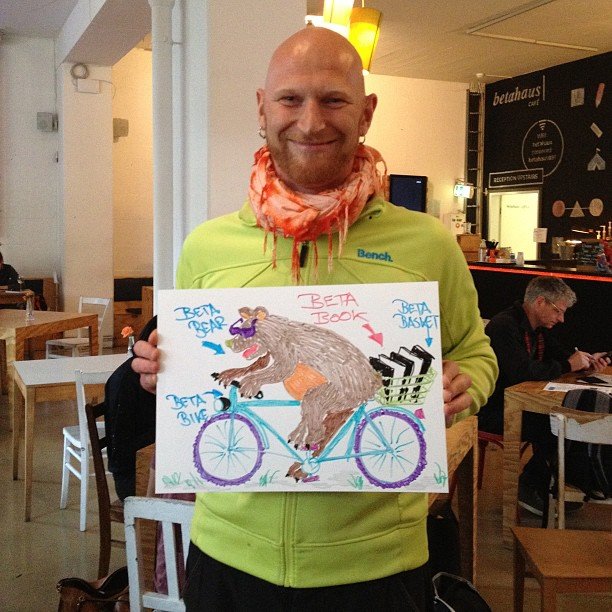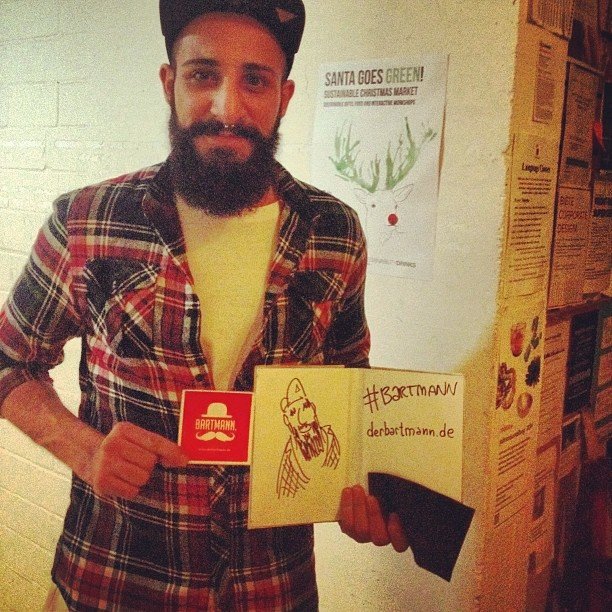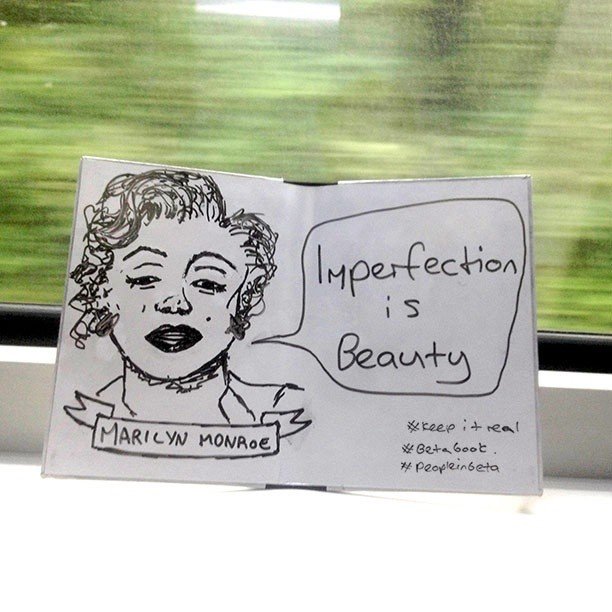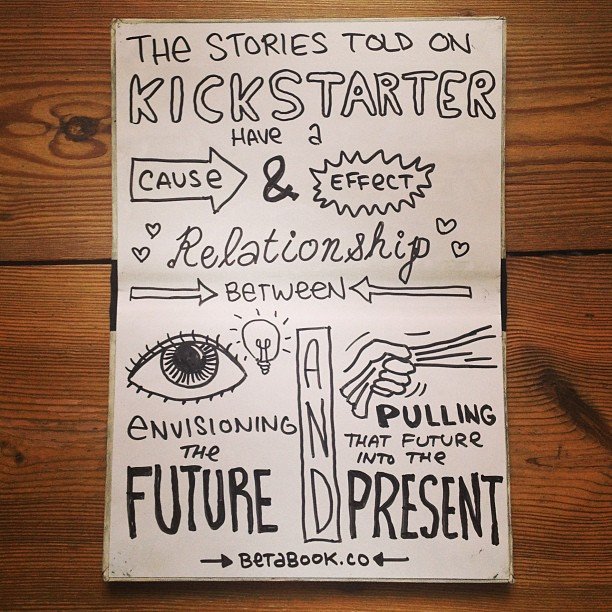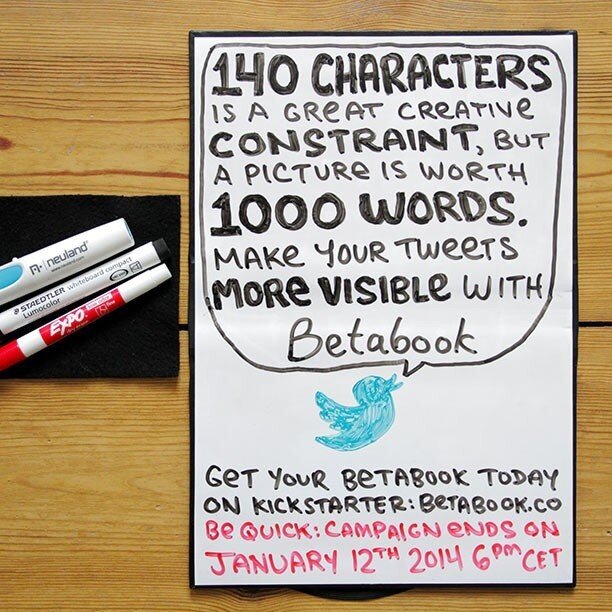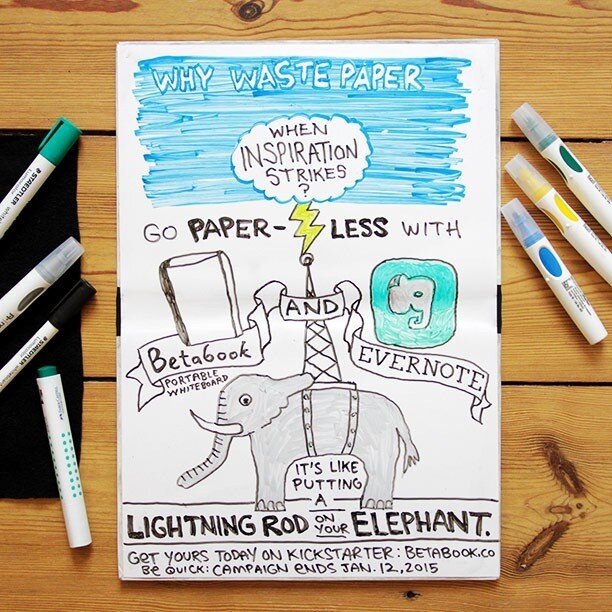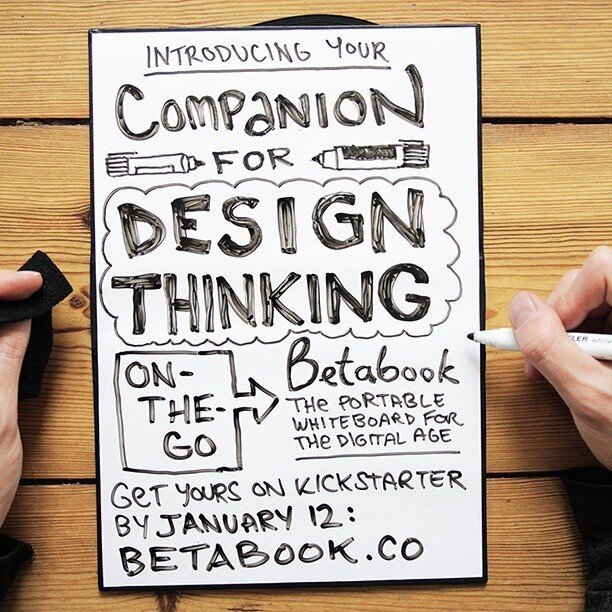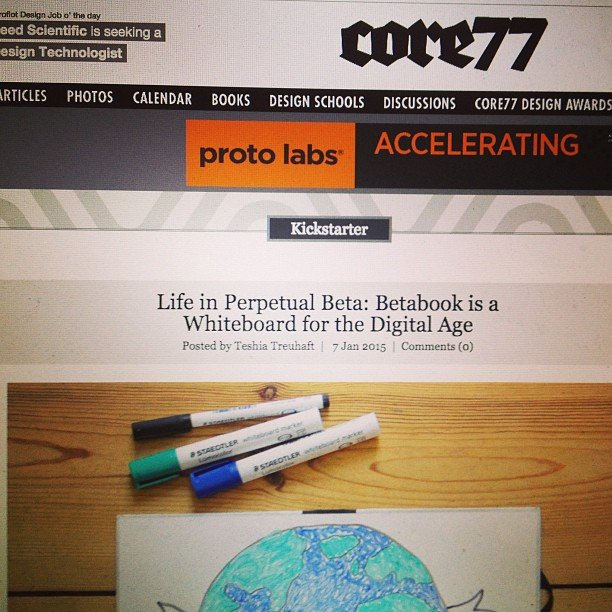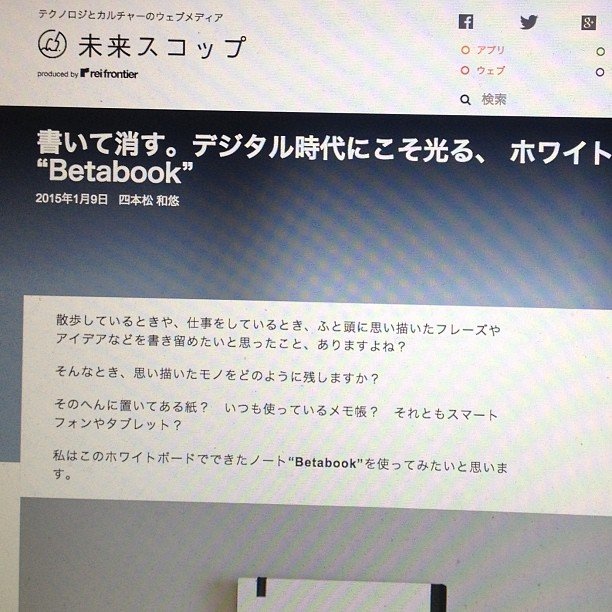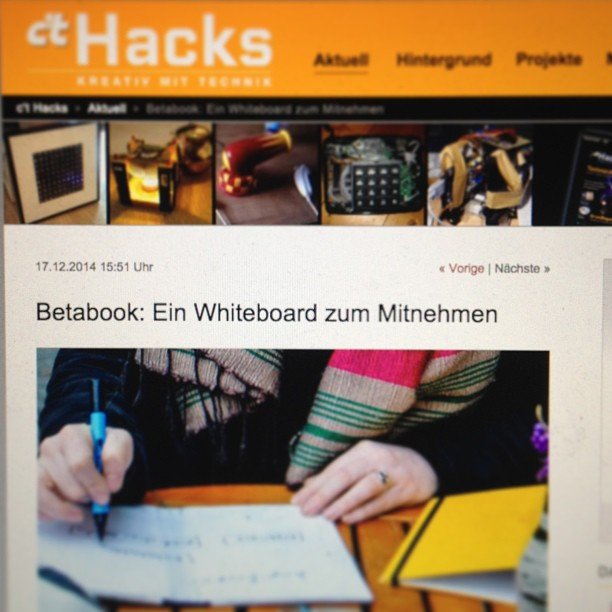Kickstarting the Portable Whiteboard for the Digital Age
43 days
•
$91,427 raised
•
1,510 backers
•
600% funded
•
43 days • $91,427 raised • 1,510 backers • 600% funded •
The Challenge: The Journey from Prototype to Product
When Inventor Jay Cousins approached KS12 about a collaboration in 2012, his portable whiteboard prototype was just an old Moleskine notebook cover with the pages torn out. He used double sided tape to install a sheet of PET inside and duct tape to repair the busted binding spine. The ink didn’t erase fully and it was super rough and ready – but it was functional. Later that year I had the perfect opportunity to rigorously test the product as a resident in Wieden+Kennedy's startup accelerator. Over the course of that three month period the prototype became my go to creative tool.
Returning from Portland to Berlin, having decided not to scale our creative studio KS12, it was clear there was another more scalable product that deserved a chance. Four processes began in parallel: market research, brand building, product development, and creating a go to market strategy that would finance the first production run.
Market Research
During the years of 2013 and 2014, I attended a large intersection of live events in the Berlin startup, design and business community. Every event was a chance to experiment with people's expectations around the product. A wide group of micro-niches were exposed to the prototypes during this time period, including service designers, architects, computer programmers, graphic notation consultants, corporate facilitators, UX/UI designers, mathematicians, startup founders, sustainability advocates, management consultants, insurance salespeople, bankers, lawyers, doctors, musicians, filmmakers, fine artists, and parents of young children, to name a few. During this process we discovered various different angles on use cases and became increasingly convinced it had very broad appeal. We developed various personas around values instead of professions; people interested in productivity, communication, self-reflection, design, and learning.
Building the Brand
I first met Jay Cousins sitting behind a camera. I interviewed him for a short film called Delivered in Beta created during an open design workshop at Berlin’s iconic original coworking space, Betahaus. Something he said off the cuff that day resonated for years to come, speaking to a certain unfinished, eternally prototypical quality of the Berlin maker community and startup scene:
“Essentially everything should be delivered in beta. Because if you tell people that something is beta, then it says it’s not finished. And we should always look at things as not finished, because that’s the only way we can improve them.”
Whether it was Jay’s pithy point of view or the namesake of the building where we first met, we arrived at the Betabook name in a very seamless organic fashion. What became more challenging was determining the perfect word mark for the brand’s logotype. After weeks of trial and error with various typefaces from an assortment of small European foundries, we knew we needed a different approach. I suggested we harness Jay’s own handwriting, written in whiteboard marker, on a sheet of plastic. This seemed to be the most organic way forward and the resulting refinement of the word mark into a polished vector signified a parallel process to the product development on the whole. The result was elegant, organic, and reflected the brand values of spontaneity and creativity while also embodying the creative/destructive tension of both modernist and wabi sabi design ethics.
Refining the Product
Months of countless prototypes resulted in key findings that set Betabook apart. Our innovations included sourcing a special rubber material for the flexible spine, developing a close relationship with the CEO of a plastics coatings company to develop a unique formula for the rewritable surface, and developing a relationship with a book bindery up to the task of a hybrid machine and handcrafted assembly line. When we finally received a working factory sample, we knew it was time to get serious about a Kickstarter campaign.
Campaign Strategy
Harnessing the sheer power of hand-drawn imagery, we intended to showcase the product's authenticity and rugged charm, ensuring that these characteristics were viewed as strengths. Knowing what broad appeal Betabook could have, our content strategy was to go wide and niche down into the specifics of who we thought would be our early adopters, using the language and jargon from specific fields as much as possible to craft memorable imagery and copy. The broader narrative revolved around the return to tactile, physical tools in an overwhelmingly digital age.
Meanwhile, financial analysis of various Kickstarter campaigns provided clarity on funding goals and reward structures, influencing our decision to anchor the campaign's ask low, pushing it towards assured success. This was a winning strategy and enabled us to enter a stretch goal, allowing backers the option of the limited edition white or classic black cover stock.
Campaign Videos
From funny videos positioning Betabook as a tablet computer, to testimonials from alpha testers, to DIY workshop documentation, to working with wet-erase templates, to integrations with Evernote’s Scannable app, we covered various angles that we thought would resonate for different reasons. These ancillary videos generated over 9,000 plays, helping to bolster our tentpole media – the Kickstarter Campaign video and campaign updates.
Influencer Portraits
Our research led us to influential members of the online community who we thought would have an especially close relationship with Betabook. So we pulled quotes from publicly available articles and talks and I drew portraits of these folks directly on the surface of the product. This led to great opportunities to create portraits with people in public at events as well.
Sketchnotes
Authors like Dave Gray, Sunny Brown and Mike Rohde – all proponents of the value of visual notetaking – laid the foundations for our elaborate sketchnote style drawings to attract attention from the consulting, facilitation, corporate, and design thinking niches. It also allowed us to showcase the “resolution” of the pro-sized product’s surface given the level of detail we were able to achieve with whiteboard markers alone.
Results
Over the course of a 43 day Kickstarter campaign, Betabook became an international phenomenon. Selected as a Kickstarter Staff Pick, the campaign closed at over 600% of its original goal with customers in 50 countries. We even turned a profit.
Betabook was featured on Make: Germany, Core77, TheNextWeb, and LifeEdited. The campaign prompted Evernote’s partnerships team to reach out to us for possible collaborations. The legendary typographer Erik Spiekermann retweeted our design thinking sketchnote during the campaign and ordered 10 units for his own studio.
Meanwhile, Sunni Brown – TED speaker and author of The Doodle Revolution – publicly tweeted her support of Betabook, calling it:
A beautiful piece of doodle engineering.
Takeaways
Betabook’s journey from prototype to product surpassed expectations. This wasn’t just a successful campaign; it was a validation of a vision, resonating across borders and disciplines. Industry attention, celebrity endorsements, and an overwhelming global response heralded the arrival of a game-changing product.
Although Betabook the business closed shop for personal reasons in 2015, Betabook the product lives on as a cult design object in the hands of the several thousand customers that were lucky enough to buy one, or two, or ten.
Credits
Creative Director / Executive Producer: Gabriel Shalom
Design Director: Patrizia Kommerell
Inventor: Jay Cousins
